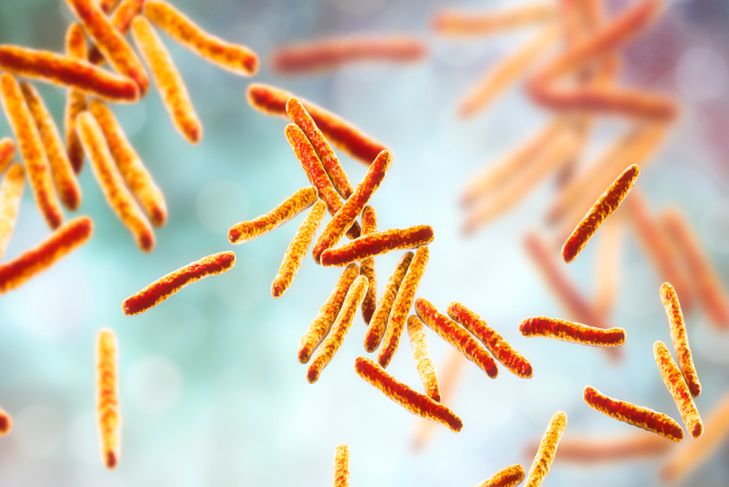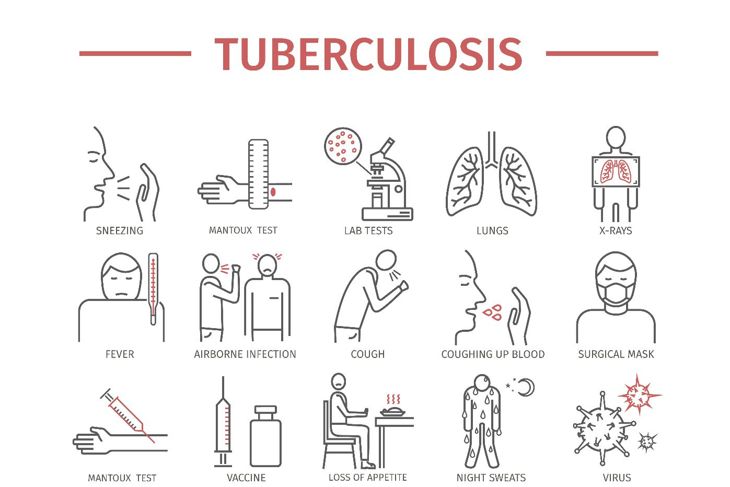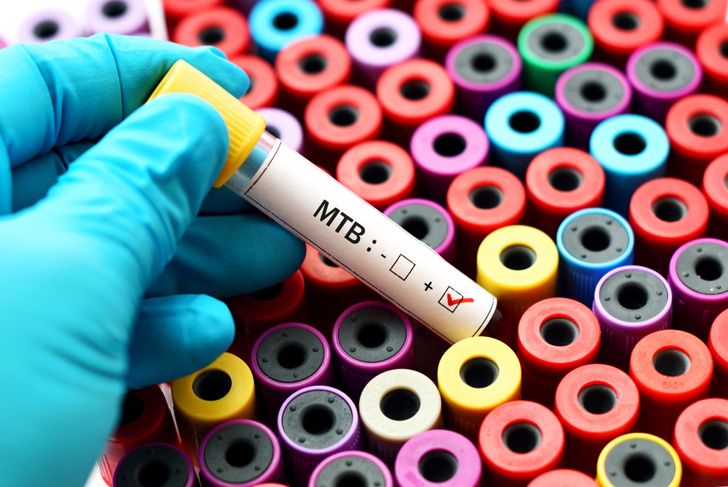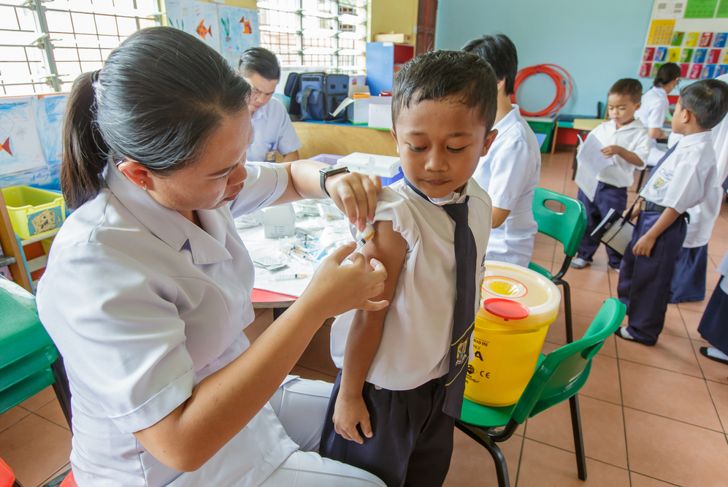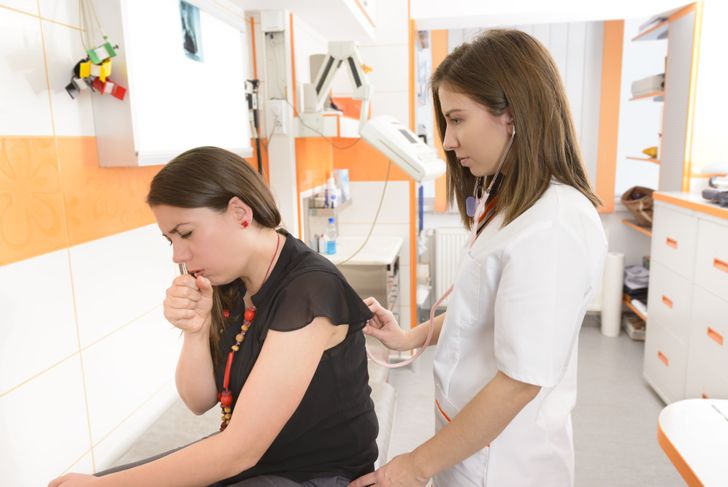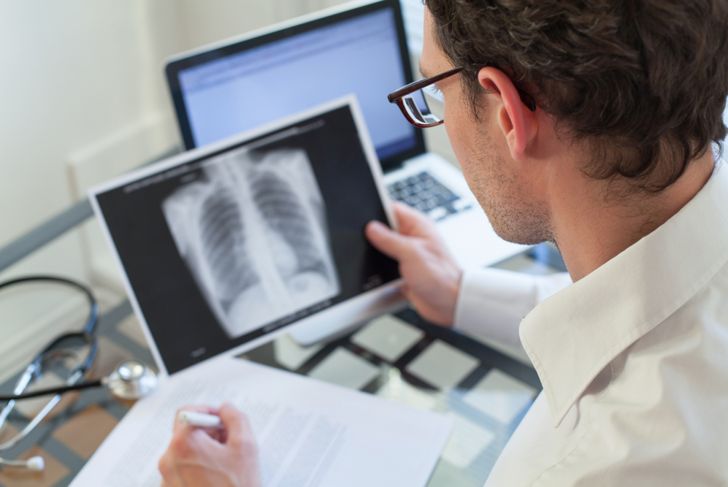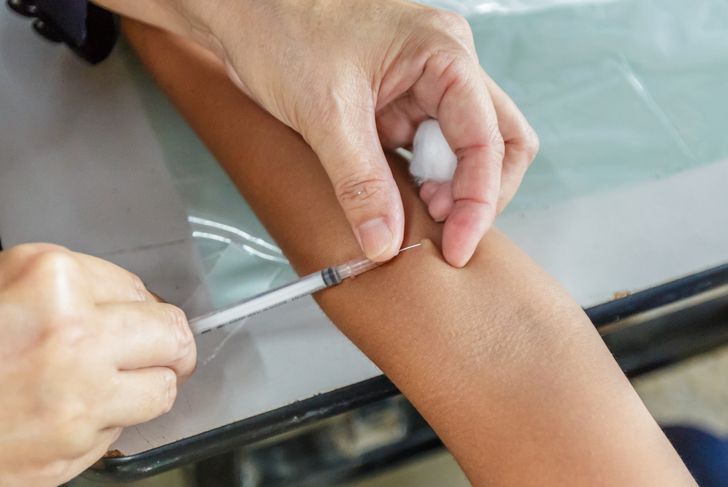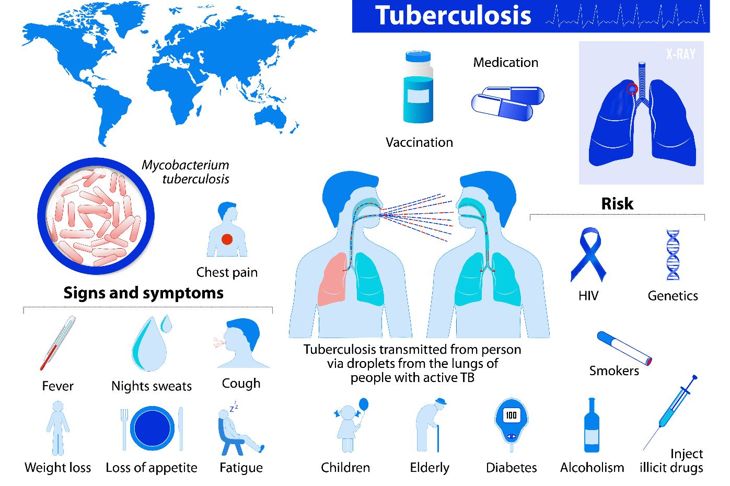Pulmonary tuberculosis is an infection affecting the lungs primarily. Typically this disease usually only attacks the respiratory systems of patients. Though it can also lay dormant in the body, only to manifest later in life. It is estimated that nearly one-third of the population is infected with some form of pulmonary tuberculosis. While this disease is not always fatal, it is a serious threat to the respiratory system and must be treated with an intensive regimen of antibiotics, something that is becoming more difficult with increased resistance to antibiotics.
Overview of Tuberculosis
Tuberculosis (TB) is generally acquired by inhaling small droplets from an infected person. Tuberculosis wards, historically, were used to quarantine those suffering from the illness, in a public health effort to protect the population. While TB generally attacks the lungs only, it can also present problems in the abdomen, the nervous system, the bones, and the glands. The actual bacteria in TB is called Mycobacterium tuberculosis. While it is transmitted through the air – leading to transmissions often between families and co-workers – the bacteria does not thrive on surfaces. This means that one cannot be infected through shaking hands or sharing foods and drinks.
Symptoms of Tuberculosis
While latent TB presents different symptoms, active TB has some tell-tale symptoms. Some of these include a persistent cough that generates a good deal of phlegm, often with blood; weight loss including a lack of appetite; a persistent fever; fatigue and tiredness; and often night sweats. With pulmonary tuberculosis, too, a common symptom is a constant breathlessness that gradually becomes more severe. Patients may also experience chest pain both due to scarring and active disease, as well as a result of constant coughing. Less prominent symptoms may include abdominal pain, headaches, and confusion.
Causes of Pulmonary Tuberculosis
Mycobacterium tuberculosis is the central bacteria in pulmonary tuberculosis. While it is more threatening – potentially life-threatening – and contagious, pulmonary tuberculosis is less infectious than the common cold or flu. A patient usually becomes infected when someone with active pulmonary TB coughs or sneezes in a closed area, and those droplets are inhaled into the lungs. This means that extended exposure is necessary for the spread of the disease. It is unlikely for a person to become infected while sitting near an infected person temporarily, like on public transportation. Also, some patients are not infectious – like children with pulmonary TB.
Diagnosis of Pulmonary Tuberculosis
One of the primary challenges in treating pulmonary tuberculosis is the diagnosis. Diagnosis of the infection can present problems for medical experts. This process generally begins with a chest x-ray, during which doctors look for cloudy areas in the lungs, potentially representing active infection. Also, phlegm samples are collected for cultures and investigation. However, it can sometimes take two to six weeks for the cultures to germinate, and treatment often will not commence until the culture samples confirm the infection. Alternative diagnostic tools include the nucleic acid amplification tests, which are faster than traditional methods but are more infrequently used.
Treatment of Pulmonary Tuberculosis
Tuberculosis is almost exclusively treated with antibiotics. While the disease can be life-threatening if left untreated, patients who receive proper antibiotics generally recover from the infection. Also, most diagnosed patients need not be hospitalized during treatment, which can last for up to nine months. The standard treatment involves two courses of antibiotics. The specific timeframe will depend on the diagnosis and seriousness of the TB infection.
Avoiding Resistance
Historical evidence suggests that after two weeks of the antibiotic regimen, patients will begin to feel better. Patients also generally no longer become infectious after this initial two weeks. It is, however, crucially important for TB patients to take the full course of antibiotics – which can last for up to another seven months – in order to properly eradicate the infection. A suspended or shortened course can leave some of the bacteria present and active in the lungs. Worse still, bacteria not eliminated with antibiotics may become resistant, making future treatment of TB more difficult, requiring potentially more invasive and toxic methods.
Treatment Side Effects
There can be serious side effects to the antibiotics taken during treatment for pulmonary tuberculosis. Patients will have liver tests before treatment to determine vulnerability to the, usually four varieties of, antibiotics. Historical treatment demonstrates that possible side effects include: nerve damage, serious eye damage, and jaundice. Other less common side effects include fever, numbness or tingling in the extremities, rashes or itchy skin, and other eye problems. Some of the antibiotics, too, have shown to reduce the effectiveness of the birth control pill. Finally, the antibiotics can interact negatively with other forms of medication that a patient may be administered.
Pulmonary Tuberculosis Prevention
While patients with pulmonary tuberculosis used to be quarantined – often in facilities dedicated to TB treatment – modern medicine suggests that patients need not be quarantined even during the initial two to three weeks when they are infectious, so long as simple preventative measures are undertaken. These include: refraining from school and work to avoid exposing large groups, covering the mouth and nose, particularly when coughing and sneezing, but also while laughing, disposing of used tissues in a sealed bag, and sleeping in a room separate from non-infected people. Infected patients should also be exposed to a good deal of fresh air.
Tuberculosis Vaccine
A vaccine is sometimes used, but not universally, to prevent infection. This vaccine is generally administered to young children and young adults under the age of 35. The vaccine shows to be ineffective in older adults. Those typically receiving the vaccine are those residing in areas of high infection rates. Also, this vaccine is offered to those traveling to work or live in countries – like countries in sub-Saharan Africa, southeast Asia, Russia, China, and South America – with high rates of TB infection.
Risk Factors
Those most at risk for contraction of pulmonary tuberculosis are those exposed to several different risk factors. Some of these risk factors include countries with high rates of TB infection, living in very crowded, highly urban conditions, existing immune diseases like HIV and AIDS, exposure to treatment – like chemotherapy – that weakens the immune system, and poor health unrelated to exposure to the TB bacteria.

 Home
Home Health
Health Diet & Nutrition
Diet & Nutrition Living Well
Living Well More
More